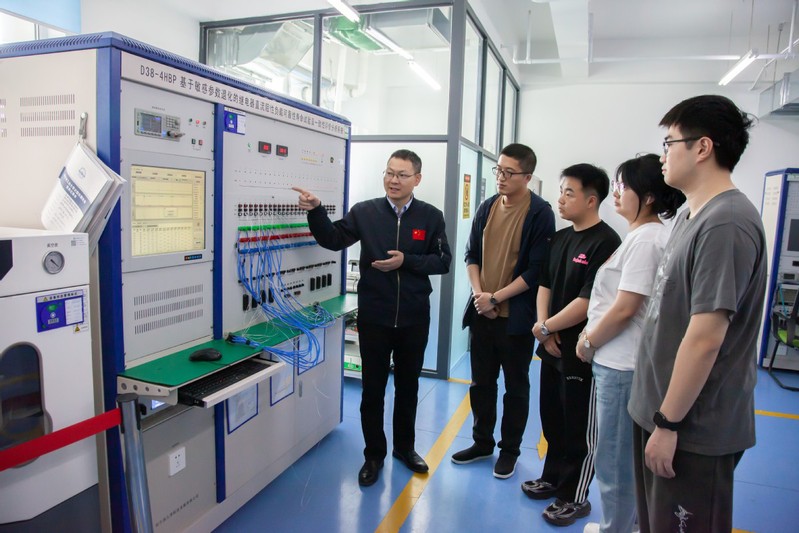A scientific achievement evaluation meeting organized by the China Aerospace Science and Technology Corporation in Beijing has recognized a breakthrough led by the Harbin Institute of Technology (HIT).
A panel of academicians unanimously concluded that HIT's research on high-reliability, long-lifespan aerospace electrical components has reached an internationally advanced level.
The breakthrough extends the lifespan of core aerospace electrical components from 20,000 cycles to 200,000 cycles, with a 36 percent improvement in performance and consistency.

Professor Ye Xuerong (L1) guides team members in scientific research and problem-solving. [Photo/hit.edu.cn]
Aerospace electrical components are fundamental and strategic resources for aerospace systems, said Ye Xuerong, dean of HIT's School of Electrical Engineering and Automation and a lead contributor to the project.
These devices, including relays, contactors, connectors, circuit breakers, and switches, are essential for tasks such as signal transmission, control execution, and system power distribution. Given their wide usage and complex operating environments, failures in these components once accounted for nearly 50 percent of all electronic part malfunctions, posing serious threats to mission success.
The project has secured 116 national invention patents, published 117 SCI-indexed papers, and developed 142 series of high-reliability aerospace components. These technologies have been widely applied in major national projects, including the Tiangong space station, Long March launch vehicles, the C919 passenger jet, and the Fuxing high-speed train, providing critical support to China's most advanced engineering feats.

